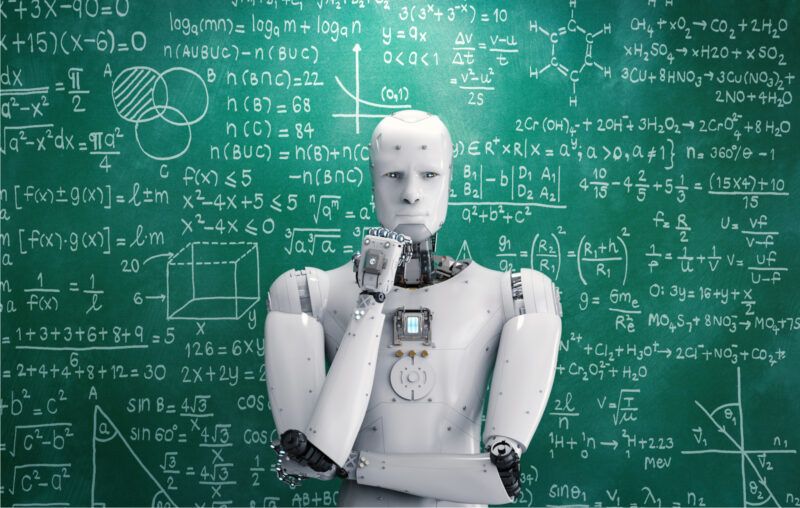Science Is More Complex than Advertised

At some point in their childhood education, most Americans are told a story about how science functions. It is widespread belief in this story that convinces the general public to accept political appeals to “The Science” as justification for related policies.
The title of this story is “The Scientific Method” and it goes something like this: Scientists observe a phenomenon; then they hypothesize (a fancy word for “guess”) about its causes; then they conduct a controlled experiment on the hypothesis; if the experimental evidence does not plainly show the hypothesis to be false, it is retained and becomes something like a scientific theory and, eventually, after further successful experimental testing, a scientific fact; on the other hand, if the experimental evidence undermines the hypothesis, it is rejected, and scientists develop a new hypothesis, improved in light of the existing evidence, and the experimental process begins anew.
Through this trial-and-error procedure, the story goes, science eventually discovers reliable truths about the phenomenon in question.
It is a nice, simple, story. Unfortunately, it is a myth. What makes its naïve, if not dogmatic, acceptance among the general public all the more inexplicable is that its mythical nature has long been recognized by those who study science.
Thanks to the work of W. V. O. Quine, Thomas Kuhn, and others, philosophers and sociologists of science have known since the middle of the last century that the simplistic “Scientific Method” is not – in fact, cannot – be the way that science functions.
Science is far more complex than that.
Kuhn showed that, as a historical matter, the trial-and-error method may operate to a degree during periods of “scientific revolution,” when scientists have become so dissatisfied with the prevailing scientific paradigm – perhaps, but not necessarily, as a consequence of accumulated experimental failures – that they begin searching for replacement paradigms.
However, the vast majority of scientists’ careers are spent conducting “normal science,” a process, not of trial and error, but of elucidating, broadening, and making more precise, the existing paradigm. In other words, when conducting normal science, scientists accept the prevailing paradigm as given and do anything but try to falsify it.
For his part, Quine (building on insights developed earlier in the century by the French physicist Pierre Duhem) showed that the logic of falsifying evidence is not what it seems at first glance. An experiment that produces seemingly disconfirming evidence does not dictate that the scientist rejects their hypothesis rather than some other assumption that figured in the experiment. A hypothesis can always be retained, in Quine’s inimitable words, “Come what may,” regardless of the evidence.
Later philosophers and sociologists of science have developed, corrected, and extended these insights, but that they make a myth of the simplistic story of “The Scientific Method” is unchallenged in the literature.
Indeed, much subsequent work in the sociology of science has questioned the very possibility that there are better and worse methods of acquiring knowledge. This work heralds a kind of cognitive relativism that denies science a privileged status above other, more traditional, methods, such as relying on the dictates of the authority of family, tribe, religion, or political faction.
One should not go so far with the relativist sociologists, however. That science, but not religious, political, or any other kind of authority, is capable of putting people on the moon, curing disease, and contributing to the mitigation of environmental problems, among many other accomplishments of the modern age, are data that the relativists need to explain, but cannot.
Science is a complex phenomenon in the sense in which F. A. Hayek spoke of the complexity of economic and other social phenomena. What it meant for a phenomenon to be complex, for Hayek, was that our knowledge, in particular, our capacity to explain and predict – and, therefore, to control – the phenomenon was limited. This is the case with respect to science, as the history of the last century of philosophical and sociological attempts to explain, predict – and, indeed, to control – science, has clearly shown.
The evaluation of empirical evidence plays a crucial, but by no means straightforward or easily understood, role in determining the acceptance or rejection of competing scientific theories. Such evaluations of the evidence are not performed by objective and dispassionate automatons, but by fallible human beings with subjective emotions, prejudices, and personal motivations, who have been sorted into communities of like-minded scientists, largely according to the methodological preconceptions they imbibed in graduate school.
Besides being logical, science is also psychological and sociological. How the objective evidence is interpreted through these individual and social lenses such that the results occasionally make possible accomplishments like landing on the moon, curing disease, and mitigating environmental problems, remains mostly mysterious. Science involves evidence, but it also involves people. It is an empirical process of testing the latest ideas against the evidence, but the empirical aspects of science are embedded in psychological and social processes that largely eclipse our understanding.
The perpetuation of the myth of “The Scientific Method” encourages the pretense that we understand science. More to the point, it encourages the false notion that, because we understand science so well, we can always rely on the implications of a thing called “The Science” as the fount of all political wisdom. But, though many of its successes (and several of its failures) are obvious, it is far from obvious why science succeeds to the extent that it does, and it is no more obvious that we should rely on science in policymaking to the extent that we do.










